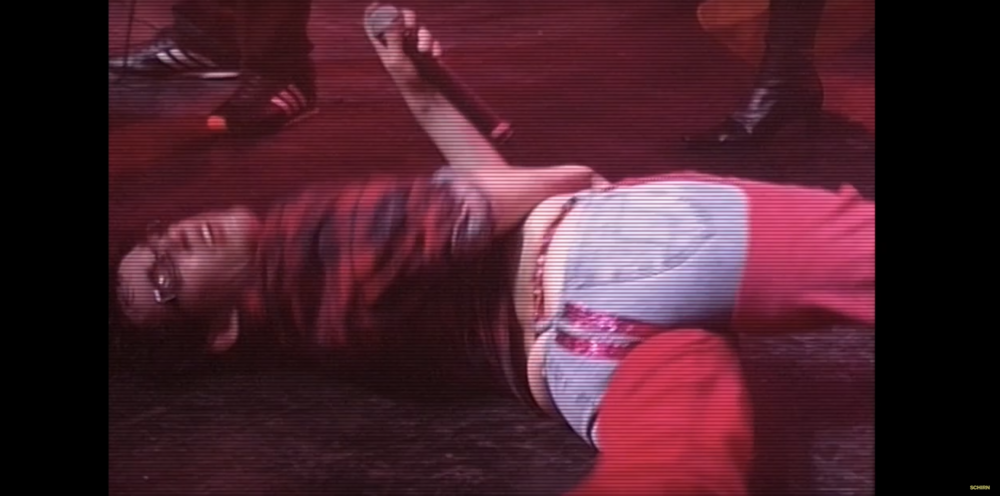Philipp Gufler's video work “Lana Kaiser” is a tribute to the DSDS star Daniel Küblböck, but at the same time it offers a complex discourse on the controversial way the German media world deals with the portrayal of queerness as “otherness”.
The fact that in the United States the TV format “RuPaul's Drag Race” has already run for 15 seasons since 2008, while in Germany homosexual dating shows like “Prince Charming” (and more recently “Princess Charming”) have been running successfully on TV, may hardly be worth mentioning for some. However, for almost all of film and TV history, the open representation of non-heteronormative lifestyles was as good as non-existent or openly defamed. Indeed, even glimpses into those marginalized spaces, such as Jennie Livingston's documentary “Paris is burning” (1990), in which she portrayed the queer New York ballroom subculture of the 1980s, attracted not only immense praise but also drew criticism: US feminist writer bell hooks, for example, accused the director of assuming the role of a voyeur as a white, Jewish middle-class lesbian, whose work encouraged cultural appropriation.

In German television, where openly homophobic slurs were still commonplace well into the Noughties (Stefan Raab was one example), a counter-project to heteronormativity probably first became clearly visible to the mass TV audience in 2002 in the format “Deutschland sucht den Superstar” (Germany is Looking for the Superstar). At that time, still under the name Daniel Küblböck, Lana Kaiser (the name she later chose for herself) competed in the first season of the casting show and quickly attracted the attention of the audience as well as the media due to her non-conformist, independent appearance. In “Lana Kaiser” (2020), the artist Philipp Gufler focuses on Kaiser; the good 13-minute video work is largely collaged from archive material and features music by British artist Rory Pilgrim.
polarized audience
Lana Kaiser, quickly identified by the media at the time as an “odd fish” (Bild newspaper), strongly polarized the audience of the casting show at the time. In Gufler's work, you can see excerpts that are difficult to take, in which the entire audience loudly booed Kaiser and passers-by demanded that she be “locked up”. At the same time, however, the fans, who called themselves “faniels”, secured her entry into the next round week after week and outdid each other in expressions of love.
i do not feel masculine, i do not feel feminine, i feel good
Kaiser had hit a nerve: with both the Dieter Bohlen and Stefan Raab viewers, who couldn't bear the counterpart identified as the ultimate Other, but at the same time didn't want to avert their gleeful gaze either.
That said, she also hit a nerve with countless fans, who also saw Kaiser's appearance as a bid for personal liberation. Among them was Philipp Gufler himself, who attended quite a few concerts as a teenager: “Seeing her on stage at a concert as a teenager made me realize what a huge toll her visibility and refusal to conform took on Lana.” In the film, an amused Kaiser recalls society's relentless pressure to define itself: “Daniel, now how should I address you: Miss Daniel, or Mr. Daniel?”
Daniel, how should I address you now: Miss Daniel, or Mr. Daniel?

Gufler, who in addition to his artistic activities is also a member of the Forum “queeres Archiv München” has repeatedly addressed non-heteronormative and queer counter-images in his multimedia works, also in the context of a critical illumination of the predominant historiography. With his “Quilts” (since 2013), a series of more than 40 multilayered textile works, he dedicated himself, among other things, to well-known personalities who fell victim to the AIDS pandemic. In "Projection on the Crisis. (Gauweilereien in München)” (2014/2021), the artist enabled a look back at the beginnings of the AIDS crisis and the Bavarian response of the then Secretary of State Peter Gauweiler in the 1980s, which resulted in disastrous consequences as well as increasing discrimination, especially against homosexuals.

As a further film, Philipp Gufler has chosen the documentary film “Nicht Mann, nicht Frau - NUR RABE” (Not Man, Not Woman – ONLY RAVEN) by Konrad Winkler and Katja Raganelli, produced by WDR in 1984. It portrays the German artist Rabe Perplexum (Manuela Margareta Hahn-Paula), to whom Gufler has already dedicated a work in his "Quilts" series as well as the short film “Becoming Rabe”.
liberation from society's pressure to conform
Rabe / Raven – the artist also spoke of herself in the third person – repeatedly addressed social repression and its effect on her own person in paintings, installations and performances. In the documentary, Rabe openly describes psychological issues, attempts at therapy, and the transformation into the identity of the Raven, which for the artist represented a kind of liberation from society's pressure to conform.

Estate Rabe Perplexum, Monacensia, Photo: Eva Jünger, image via blog.muenchner-stadtbibliothek.de
Rabe’s descriptions of loneliness and of fundamental isolation from other people are haunting. Even close friends and relatives apparently could not grasp her as a person in her entirety. “Everyone around me,” says the artist, “was only interested in my functions.” And Lana Kaiser also reports a similar dissociation in the excerpts in Gufler's work: “I definitely felt like a plaything. I also really had the feeling that I wasn't really allowed to be a person in the media anymore. [...] I felt like I was a commodity being presented, with no consideration for the losses.” Both Rabe and Lana Kaiser are united by the sad commonality of an early death: the Munich artist committed suicide in 1996 at the age of 39, while Kaiser disappeared overboard in 2018, under unexplained circumstances, during a cruise.










